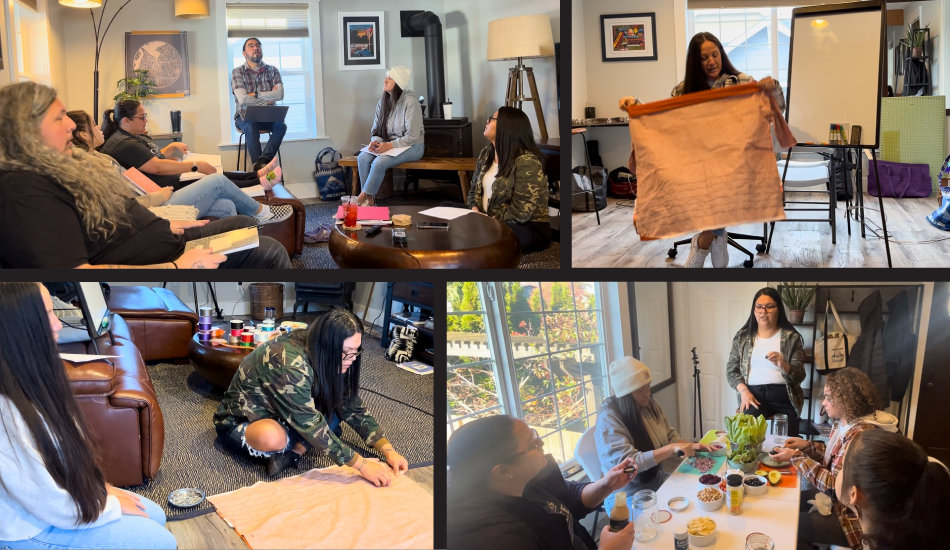By Molly Bryant, Puyallup Tribal News
At a cozy Airbnb in North Tacoma, eight members of the Puyallup Tribal Language Program gather in a circle conversing in Lushootseed. The discussion is driven by prompts. How was your day? What would you do if you woke up one day and no one was around? Participants frequently erupt in laughter.
The team has been meeting in this house three days a month for the last four months. There is one rule: This is a no-English zone. Only Lushootseed is allowed once group members cross the threshold. The need for a language immersion house became evident following various failed attempts to exclusively speak Lushootseed in the Language Department office. Program Director Amber Hayward recalls that answering phone calls and emails throughout the day forced her team to go back and forth between Lushootseed and English.
Language Consultant Zalmai Zahir (a.k.a Zeke) emphasizes the importance of creating structures that completely cut out the use of English in language revitalization efforts.
“If we don’t keep those structures going, the competition with English is too great,” he says. Zeke travels to Tacoma monthly to assist with the immersion house. He holds a Ph.D. in Linguistics from the University of Oregon and has spent many years learning from Tribal Elders in Muckleshoot, Suquamish and more.
The Language Program staff utilizes “language nesting” and “domains” in their teachings. As Hayward explains, a language nest is “a physical location where you do not allow English to contaminate.” Students are encouraged to print Lushootseed labels for the mirror, sink, soap, hairbrush and other items in the bathroom, for example, negating the need to speak English in that room.
“Domains” refer to narrating everyday happenings in Lushootseed for practice. As a person completes daily actions, such as brushing their teeth or washing their face, the idea is that they speak the action out loud. One of the benefits of learning in this way, Hayward explains, is there is no need for a partner to practice the language.
The Language Program uses these techniques at the immersion house but on a broader scale, as the entire house becomes a language nest.
Participants also need to take breaks and divide the day into smaller sessions for the best results. Hayward realizes it can be physically and mentally draining at times to sit for hours speaking Lushootseed. “When your … mind is overloaded, then sometimes your body starts shutting down, like you’ll start getting sleepy, or you can’t sit,” she says.
In the mornings, they hold group conversations in which Zahir teaches mini-lessons, clarifying any questions about vocabulary words or pronunciations. In the afternoon, they engage in activities like cooking, sewing, playing games and watching football, all narrated in Lushootseed.
The revitalization of Lushootseed has rapidly grown. According to data provided by the Language Program, based on registration and attendance of their various classes, the number of Lushootseed speakers has grown from approximately five in 2014 to 472 in 2022. They define a speaker as “someone who is speaking at least an hour or more of Lushootseed per day,” depending on the time and capacity of the individual.
As for the program’s future, they seek to expand their goal of revitalizing Lushootseed to the entire community, including other residents residing on the reservation or in Tacoma. There has even been discussion of wanting to meet with other Lushootseed-speaking Tribes in a central location for collective communication.





